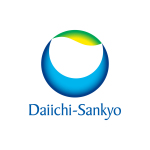- Companies will partner to develop novel antibody-drug conjugates using Catalent’s SMARTag bioconjugation platform and monoclonal antibodies from Exelixis’ growing preclinical pipeline
- Agreement includes exclusive options on multiple targets over three-year term, with potential to extend time and scope of the collaboration
- Deal is the fifth pipeline-enhancing agreement signed by Exelixis since 2018
ALAMEDA, Calif. & SOMERSET, N.J.–(BUSINESS WIRE)–Exelixis, Inc. (Nasdaq: EXEL) and Catalent today announced a partnership under which Catalent’s Redwood Bioscience subsidiary will develop multiple antibody-drug conjugates (ADCs) for Exelixis using Catalent’s proprietary SMARTag® site-specific bioconjugation technology.
Under the terms of the agreement, Catalent will use its SMARTag® bioconjugation platform to build ADCs using monoclonal antibodies (mAbs) from Exelixis’ growing preclinical pipeline. In exchange for an upfront payment to Catalent of $10 million, Exelixis received an exclusive option to nominate up to a fixed number of targets using the SMARTag® ADC platform over a three-year period. The companies plan to advance the ADCs into preclinical development, and, prior to filing an Investigational New Drug application, Exelixis may exercise its exclusive option to a worldwide license of the related ADC program and continue clinical development and commercialization. Exelixis will provide research & development funding, and Catalent will be eligible for development and commercial milestones and royalties on net sales of any product commercialized as part of the collaboration.
Developed by Catalent’s Redwood Bioscience subsidiary, the SMARTag® technology platform provides optimized site-specific protein-modification and linker technologies for ADCs and other bioconjugates. The SMARTag® platform overcomes the limitations associated with traditional protein chemistries that produce heterogeneous products with variable conjugate potency, toxicity, and stability and enables the development of ADCs with a wider therapeutic window and improved manufacturability.
“With our lead product CABOMETYX now a global oncology franchise, over the past several years Exelixis has moved beyond our small molecule medicinal chemistry roots to build out a pipeline that encompasses a variety of promising therapeutic modalities,” said Peter Lamb, Ph.D., Executive Vice President, Scientific Strategy and Chief Scientific Officer of Exelixis. “Our collaboration with Catalent – the fifth pipeline-enhancing agreement we’ve signed since 2018 – provides an attractive framework for identifying and advancing differentiated ADC product candidates with the potential to improve upon current ADC therapies. We are looking forward to working with Catalent as we rapidly advance our mission to help cancer patients recover stronger and live longer.”
“The SMARTag® platform has recently demonstrated promising results in the clinic, highlighting the potential to create ADCs with significantly expanded therapeutic indices,” commented Mike Riley, Region President, Catalent Biologics, North America. “We are excited to partner with Exelixis, a leading oncology biotechnology company, and leverage our experienced team, unique SMARTag® technology platform, and deep analytical expertise to develop ADCs targeting various oncology indications.”
About Catalent Biologics
Catalent Biologics is a global leader in development, manufacturing and analytical services for new biological entities, cell and gene therapies, biosimilars, sterile injectables, and antibody-drug conjugates. With over 20 years of proven expertise, Catalent Biologics has worked with 600+ mAbs and 80+ proteins, produced 13 biopharmaceutical drugs using GPEx® cell line development technology, and manufactured 35+ commercially approved products. Catalent Cell & Gene Therapy, a unit of Catalent Biologics, is a full-service partner for adeno-associated virus (AAV) vectors and CAR-T immunotherapies, with deep experience in viral vector scale-up and production. Catalent recently acquired MaSTherCell, adding expertise in autologous and allogeneic cell therapy development and manufacturing. Catalent Cell & Gene Therapy has produced 100+ cGMP batches across 70+ clinical and commercial programs. For more information, visit biologics.catalent.com.
About Catalent
Catalent is the leading global provider of advanced delivery technologies, development, and manufacturing solutions for drugs, biologics, cell and gene therapies, and consumer health products. With over 85 years serving the industry, Catalent has proven expertise in bringing more customer products to market faster, enhancing product performance and ensuring reliable global clinical and commercial product supply. Catalent employs over 13,900 people, including approximately 2,400 scientists and technicians, at more than 45 facilities, and in fiscal year 2020 generated over $3 billion in annual revenue. Catalent is headquartered in Somerset, New Jersey. For more information, visit www.catalent.com
More products. Better treatments. Reliably supplied.™
About Exelixis
Founded in 1994, Exelixis, Inc. is a commercially successful, oncology-focused biotechnology company that strives to accelerate the discovery, development and commercialization of new medicines for difficult-to-treat cancers. Following early work in model system genetics, we established a broad drug discovery and development platform that has served as the foundation for our continued efforts to bring new cancer therapies to patients in need. Our discovery efforts have resulted in four commercially available products, CABOMETYX® (cabozantinib), COMETRIQ® (cabozantinib), COTELLIC® (cobimetinib) and MINNEBRO® (esaxerenone), and we have entered into partnerships with leading pharmaceutical companies to bring these important medicines to patients worldwide. Supported by revenues from our marketed products and collaborations, we are committed to prudently reinvesting in our business to maximize the potential of our pipeline. We are supplementing our existing therapeutic assets with targeted business development activities and internal drug discovery — all to deliver the next generation of Exelixis medicines and help patients recover stronger and live longer. Exelixis is a member of the Standard & Poor’s (S&P) MidCap 400 index, which measures the performance of profitable mid-sized companies. For more information about Exelixis, please visit www.exelixis.com, follow @ExelixisInc on Twitter or like Exelixis, Inc. on Facebook.
Exelixis Forward-Looking Statements
This press release contains forward-looking statements, including, without limitation, statements related to: Exelixis’ immediate and potential future financial and other obligations under the collaboration, option and exclusive license agreement with Catalent; the potential for the collaboration with Catalent to result in the advancement of differentiated ADC product candidates with the potential to improve upon current ADC therapies and advance Exelixis’ mission to help cancer patients recover stronger and live longer; and Exelixis’ plans to reinvest in its business to maximize the potential of the company’s pipeline, including through targeted business development activities and internal drug discovery. Any statements that refer to expectations, projections or other characterizations of future events or circumstances are forward-looking statements and are based upon Exelixis’ current plans, assumptions, beliefs, expectations, estimates and projections. Forward-looking statements involve risks and uncertainties. Actual results and the timing of events could differ materially from those anticipated in the forward-looking statements as a result of these risks and uncertainties, which include, without limitation: the level of costs associated with Exelixis’ commercialization, research and development, in-licensing or acquisition of product candidates, and other activities; uncertainties inherent in the drug discovery and product development process; Exelixis’ dependence on its relationship with Catalent, including Catalent’s adherence to its obligations under the collaboration, option and exclusive license agreement and the level of Catalent’s assistance to Exelixis in completing clinical trials, pursuing regulatory approvals or successfully commercializing partnered compounds in the territories where they may be approved; the continuing COVID-19 pandemic and its impact on Exelixis’ research and development and commercial activities; risks and uncertainties related to regulatory review and approval processes and Exelixis’ compliance with applicable legal and regulatory requirements; Exelixis’ and Catalent’s ability to protect their respective intellectual property rights; market competition; changes in economic and business conditions; and other factors discussed under the caption “Risk Factors” in Exelixis’ Quarterly Report on Form 10-Q filed with the Securities and Exchange Commission (SEC) on August 6, 2020, and in Exelixis’ future filings with the SEC. All forward-looking statements in this press release are based on information available to Exelixis as of the date of this press release, and Exelixis undertakes no obligation to update or revise any forward-looking statements contained herein, except as required by law.
Exelixis, the Exelixis logo, CABOMETYX, COMETRIQ and COTELLIC are registered U.S. trademarks.
MINNEBRO is a Japanese trademark.
Catalent and SMARTag are registered trademarks of Catalent Pharma Solutions, Inc. or its affiliates or subsidiaries in the United States and other countries.
Contacts
Exelixis
Investors Contact:
Susan Hubbard
Executive Vice President,
Public Affairs & Investor Relations
(650) 837-8194
Media Contact:
Hal Mackins
For Exelixis, Inc.
(415) 994-0040
Catalent
Media Contact:
Chris Halling
+44 (0)7580 041073
Richard Kerns
+44 (0) 161 728 5880



